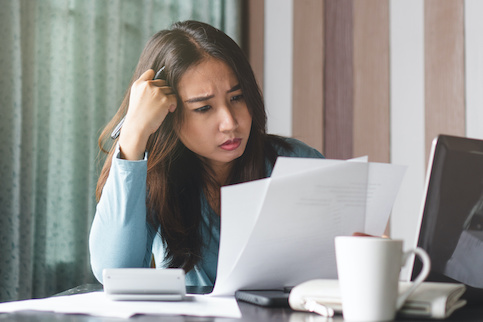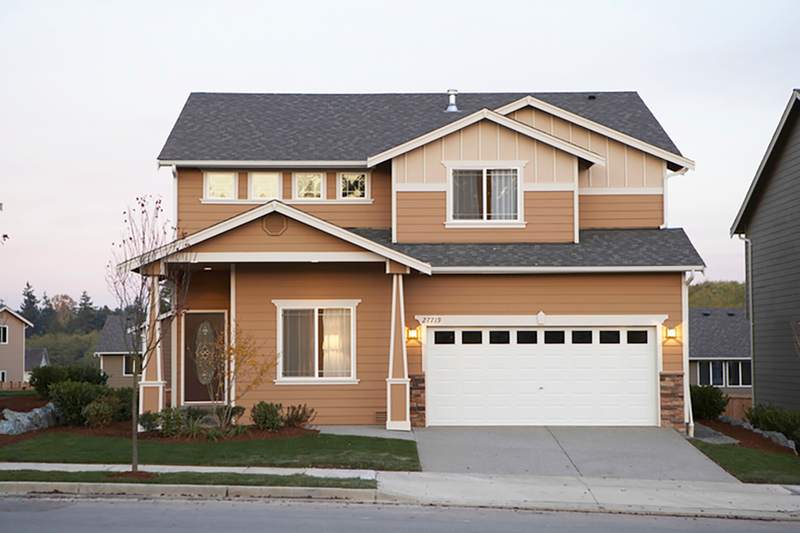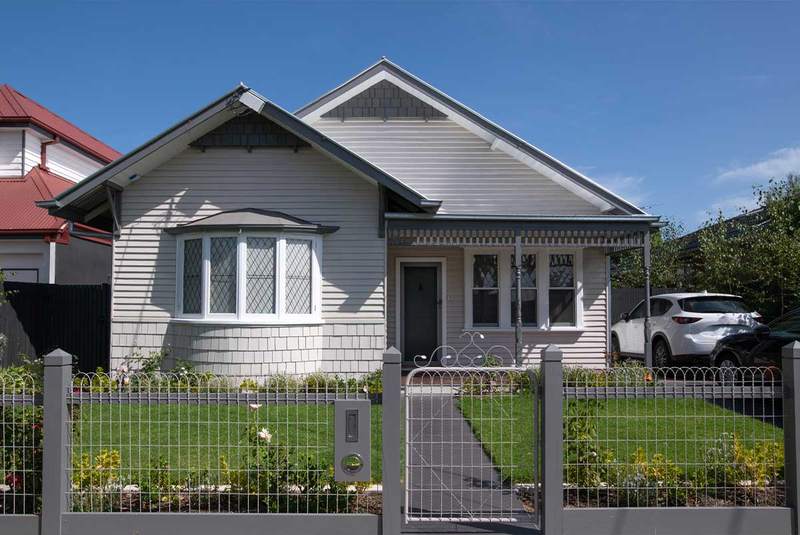Facing the prospect of foreclosure on your home is scary, but it’s not always inevitable. There are many options and resources available to help you stay in your home as well as loss mitigation options if remaining in your home is no longer feasible.
Here’s how to stop foreclosure before it’s too late.
What Is Foreclosure?
Foreclosure is the legal process banks and other mortgage lenders use to recoup their losses when borrowers stop making payments on their mortgage loans.
When a borrower uses a mortgage to purchase a property, they agree to make monthly payments to their lender until they’ve paid back the loan. If a borrower is no longer able to make their payments, often due to financial hardship such as a job loss, the lender will try to earn back some or all of what they’re still owed by taking ownership of the home and selling it.
Foreclosure doesn’t happen if you miss a payment. Instead, foreclosure usually occurs once you’ve missed 4 or more months of payments and are considered in default or in preforeclosure. Federal law prevents servicers from beginning the foreclosure process until the borrower is more than 120 days delinquent.
When a home is foreclosed on, the homeowner is evicted from the property and the foreclosure is recorded on their credit report, severely impacting their credit score.
See What You Qualify For
Buy A Home
Discover mortgage options that fit your unique financial needs.

Refinance
Refinance your mortgage to have more money for what matters.
Tap Into Equity
Use your home’s equity and unlock cash to achieve your goals.
How To Avoid Foreclosure
If you aren’t yet to the point where you’re missing payments but anticipate that you might be heading in that direction, or want to make sure you have a safety net in case you end up in a tight spot financially, here are some things you can do to prevent a foreclosure from ever happening in the first place.
Make Your Monthly Mortgage Payments
Obviously, prioritizing your monthly mortgage payments is important. However, while most people who end up in foreclosure understand the importance of making those payments, they often simply don’t have the funds to keep doing so.
Have An Emergency Fund
This is why having an emergency savings account or other liquid assets is so important. If you’re able to do so, saving up a few months’ worth of living expenses can go a long way in ensuring that if something bad happens, you’ll have some cash to keep yourself afloat for at least a little while.
If you lose your source of income, for example, this emergency money can give you enough time to find another job without having to worry about losing your home.
Refinance Your Mortgage
If your mortgage payment is starting to stretch your budget a little too thin, it might be a good idea to look into whether refinancing your mortgage would lower your monthly payments.
This can be a helpful solution for those who are still able to make payments on their mortgage but, due to a reduction in income, added household costs or a monthly payment increase on an adjustable-rate mortgage, are starting to feel overly burdened by their monthly housing payment.
View Your Refinancing Options
See recommended refinance options and customize them to fit your budget.
Talk To Your Lender
It’s also always a good idea to keep in frequent contact with your lender if you anticipate issues with making payments. In most cases, your lender would much rather work with you to find a solution that keeps you in your home rather than having to go through the process of foreclosure, which can be lengthy and expensive for them.
6 Ways To Stop A Foreclosure
Your options for stopping the foreclosure process will depend on how far along you are and what your financial situation looks like. It’s important to not wait to stop a foreclosure until the last minute. Instead, it’s best to speak with your servicer about options as soon as you know that you’re going to miss payments so they can see what they can do to help you get back on track and possibly refinance to avoid foreclosure.
1. Ask About A Repayment Plan
This is a good option if you had a temporary setback that prevented you from making your mortgage payments for a period of time and are now able to continue making payments in full each month but can’t afford to pay back the missed payments in one lump sum.
Your lender may be willing to work out a repayment plan to get your past-due loan back on track, provided you won’t have trouble continuing to make payments going forward. As part of this repayment plan, the lender will take the amount you owe in missed payments and add increments of it to your regular monthly payments, allowing you to pay back what you owe over a specified time period.
As you work with your lender to create a new payment plan, be sure to honestly evaluate what you can afford to pay back each month and don’t agree to pay more than what you know your budget can handle. Ask about other mortgage relief options. Depending on the situation, your lender may offer one of the options below:
2. Request A Forbearance
Mortgage forbearance allows borrowers who are experiencing temporary financial struggles to put a hold on their monthly mortgage payments for a certain period of time.
During the forbearance period, the loan servicer expects that you’ll use that time to get back on your feet and prepare to continue making your regular monthly payments, in addition to paying back what you accrued while you were in forbearance, at the end of the specified period of time.
The key thing to note about forbearance is that you’ll owe the amount that was suspended at the end of the period. So, if you were in forbearance for 5 months, at the end of it you’ll need to pay back 5 months’ worth of mortgage payments. This can generally be done either as a lump sum or as part of a repayment plan.
3. Apply For A Loan Modification
As you may have guessed, a loan modification modifies the terms of your current loan. If you aren’t eligible to refinance, a loan modification can work similarly in helping to make your monthly payments more affordable, allowing you to stay current on the loan and remain in your home.
A common type of loan modification is extending the length of the loan term so that you have more time to pay off the loan, lowering your monthly payments. This may or may not be used in combination with lowering your rate.
4. Consult A HUD-Approved Counseling Agency
If you’re in need of expert advice, the Department of Housing and Urban Development (HUD) sponsors housing counseling agencies around the country that provide loss mitigation counseling to individuals facing foreclosure. They can help you learn how to stop foreclosure today. These services typically are provided at little to no cost.
You can search for a counselor online or call (800) 569-4287 to get started.
5. Conduct A Short Sale
If you aren’t eligible for any payment restructuring options that would allow you to stay in your home, your remaining options to avoid foreclosure will require you to leave your home. One of these options is what’s known as a short sale.
In a short sale, you sell your real estate for less than what you owe on it. The proceeds of the sale are paid to your lender, who then will typically forgive part or all of the remaining balance. You’ll need to get approval from your lender before you can pursue this option, as they’ll have to agree to accept less than what you owe on your loan.
6. Sign A Deed In Lieu Of Foreclosure
Sometimes, to avoid foreclosure, a mortgage company will accept what’s called a deed in lieu of foreclosure, which is where you voluntarily transfer ownership of your home to your lender and, in exchange, are released from your mortgage obligation. This allows you to avoid an official foreclosure proceeding.
See What You Qualify For
You can get a real, customizable mortgage solution based on your unique financial situation.
FAQs About Foreclosures
Have questions about preventing foreclosure? We have answers to some common questions, but you should always talk to your lender or a real estate attorney before making any decisions.
Can you stop foreclosure by paying the past due amount?
If your state has a redemption period, that means you’ll have a certain amount of time after the sale to purchase your home back or pay off the mortgage and remain in your home.
Your state’s housing authority will have more information on the specific laws in your state.
When is it too late to stop a foreclosure?
Once you’re 120 days late on your payments with no attempt to bring the account current, your lender will begin foreclosure and a sale will be scheduled. In states without a redemption period, homeowners can typically stop the foreclosure process up to the date of the foreclosure auction, though exactly when varies from state to state.
Exactly how this process unfolds, and at what point you’ll have permanently lost your home, depends on your state’s laws.
What will happen to my home if I can’t stop the foreclosure?
At the foreclosure sale, your home will be auctioned off and the lender will use the proceeds of the sale to recoup as much of their losses as they can.
What does a foreclosure defense attorney do for you?
If your mortgage lender issues a foreclosure action against you, a law firm specializing in foreclosure can help you analyze your debt and make an informed decision in the complex landscape of foreclosure law.
You have options. A foreclosure lawyer could help you with reinstating the mortgage or, if it’s too late, help you file for bankruptcy.
Bottom Line: Foreclosure Prevention Is The Best Defense
Though it might be tempting to ignore it, the sooner you take action to prevent or stop foreclosure, the better off you’ll be.
View Your Refinancing Options
See recommended refinance options and customize them to fit your budget.

Victoria Araj
Victoria Araj is a Staff Writer for Rocket Companies who has held roles in mortgage banking, public relations and more in her 15-plus years of experience. She has a bachelor’s degree in journalism with an emphasis in political science from Michigan State University, and a master’s degree in public administration from the University of Michigan.












